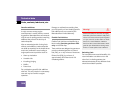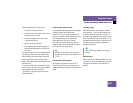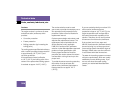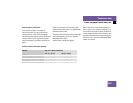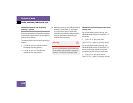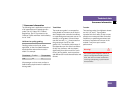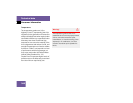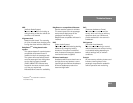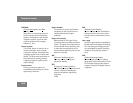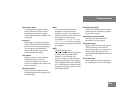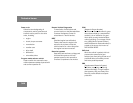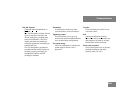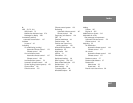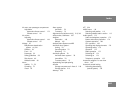
362
Technical terms
COMAND*
(C
ockpit Management and Data
System)
Information and operating center for
vehicle sound and communications
systems, including the radio and the
navigation system, as well as other
optional equipment (CD changer*,
telephone*, etc.).
Control system
The control system is used to call up
vehicle information and to change
component settings. Information and
messages appear in the multifunction
display. The driver uses the buttons on
the multifunction steering wheel to
navigate through the system and to
adjust settings.
Cruise control
Driving convenience system for
automatically maintaining the vehicle
speed set by the driver.
Engine number
The number set by the manufacturer
and placed on the cylinder block to
uniquely identify each engine
produced.
Engine oil viscosity
Measurement for the inner friction
(viscosity) of the oil at different temper-
atures. The higher the temperature an
oil can tolerate without becoming thin,
or the lower the temperature it can
tolerate without becoming viscous, the
better the viscosity.
ESP
(E
lectronic Stability Program)
Improves vehicle handling and
directional stability.
ETD
(E
mergency Tensioning Device)
Device which deploys in certain frontal
and rear collisions exceeding the
system's threshold to tighten the
seat belts.
->SRS
FSS
(F
lexible Service System)
Service indicator in the multifunction
display that informs the driver when
the next vehicle maintenance service
is due.
Gear range
Number of gears which are available to
the automatic transmission for shifting.
The automatic gear shifting process
can be adapted to specific operating
conditions using the gear selector
lever.
GPS
(G
lobal Positioning System)
Satellite-based system for relaying
geographic location information to and
from vehicles equipped with special
receivers. Employs CD digital maps for
navigation.



